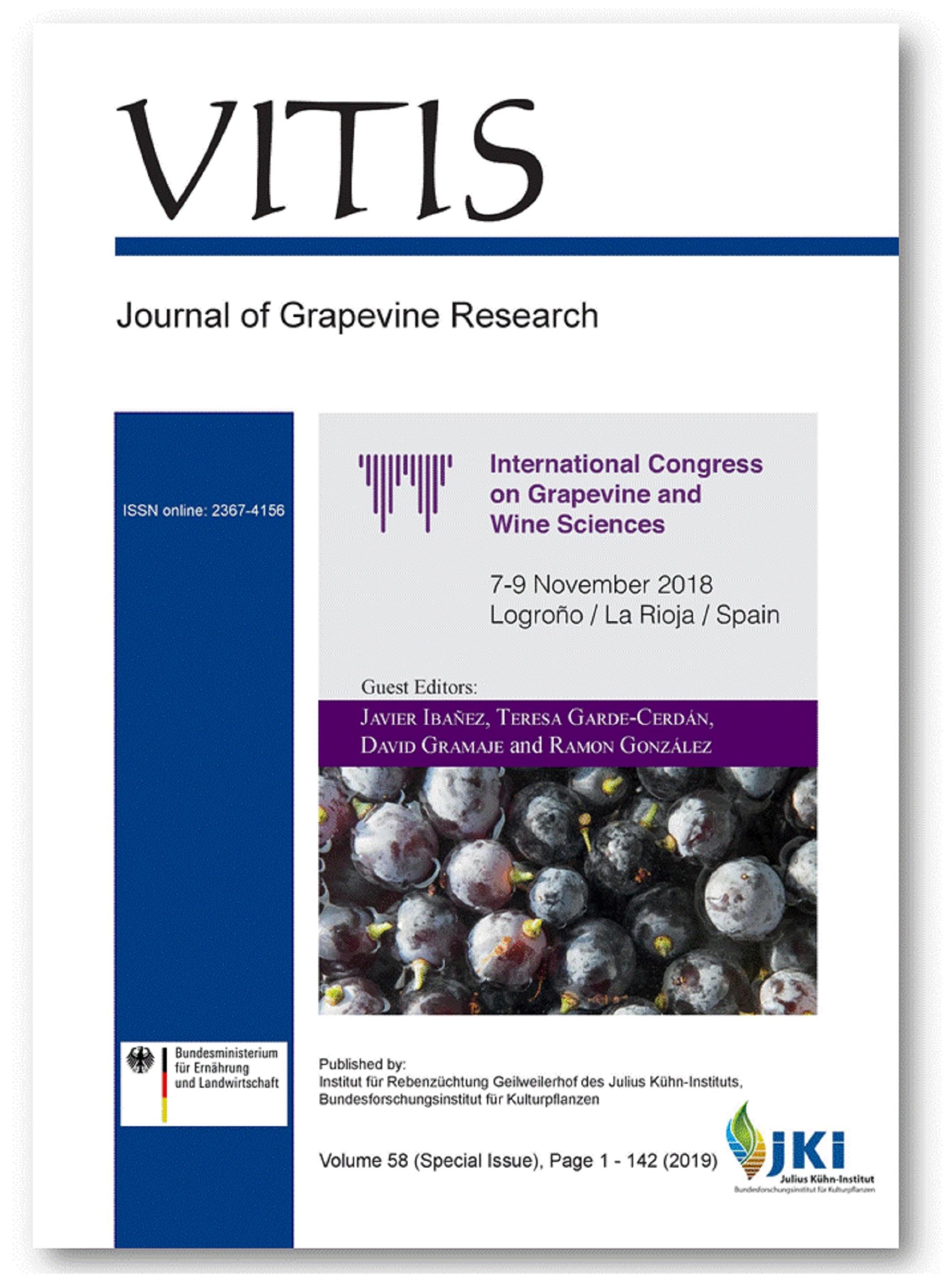Amino acids content in 'Tempranillo' must from three soil types over four vintages
DOI:
https://doi.org/10.5073/vitis.2019.58.special-issue.3-12Keywords:
soil N-NO3- availability; N-NH4 availability; grape; terroir; nitrogen; Vitis viniferaAbstract
Amino acids are the main grape nitrogen compounds and the principal source of N for yeasts, being precursors of several volatile compounds. Therefore, N compound concentrations in musts can affect sensorial characteristics of wines. The aim of this study was to analyse the influence of N-NO3- and N-NH4+ contents from different soils on profile and content of amino acids in 'Tempranillo' grapes. In order to determine this soil influence on must quality, three plots were selected in AOC Rioja, classified as Fluventic Haploxerepts, Typic Calcixerepts, and Petrocalcic Palexerolls. The results showed that amino acids and yeast assimilable nitrogen (YAN) content allowed us to differentiate samples from the three soils, and in each soil type, samples of each season. In general, must contents of total amino acids and some of them, as alanine, threonine, and tyrosine, were more influenced by soil type; YAN, proline, histidine, serine, and glycine concentrations mainly depended on the interaction soil-vintage. In conclusion, free amino acids concentration could be a tool to differentiate musts coming from different soils.
Downloads
Additional Files
Published
Issue
Section
License
The content of VITIS is published under a Creative Commons Attribution 4.0 license. Any user is free to share and adapt (remix, transform, build upon) the content as long as the original publication is attributed (authors, title, year, journal, issue, pages) and any changes to the original are clearly labeled. We do not prohibit or charge a fee for reuse of published content. The use of general descriptive names, trade names, trademarks, and so forth in any publication herein, even if not specifically indicated, does not imply that these names are not protected by the relevant laws and regulations. The submitting author agrees to these terms on behalf of all co-authors when submitting a manuscript. Please be aware that this license cannot be revoked. All authors retain the copyright on their work and are able to enter into separate, additional contractual arrangements.



